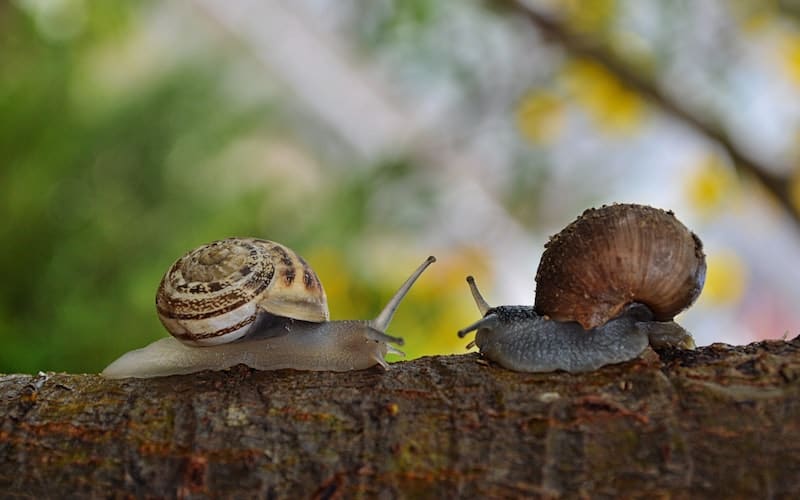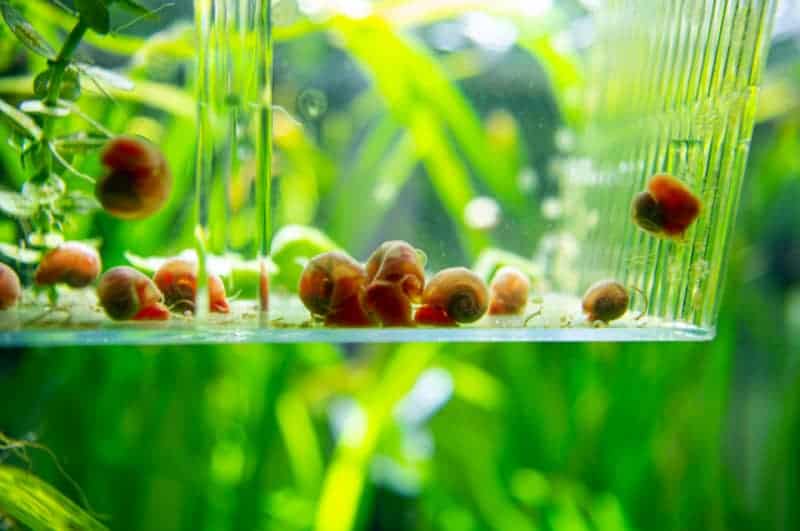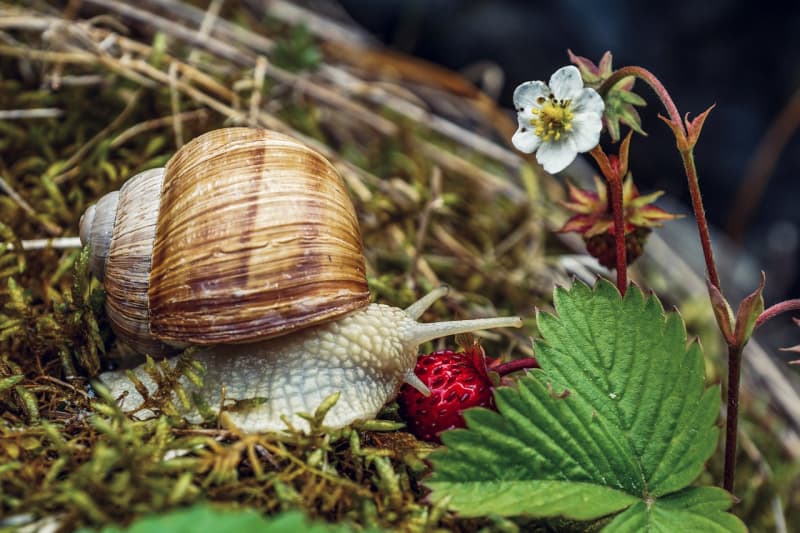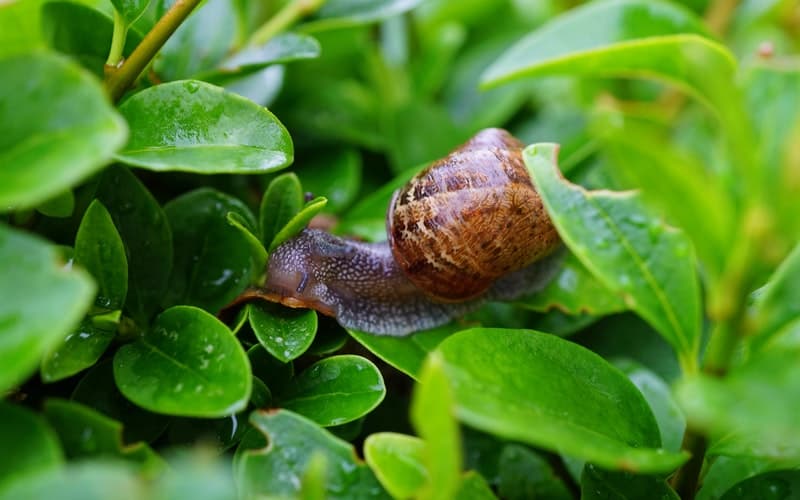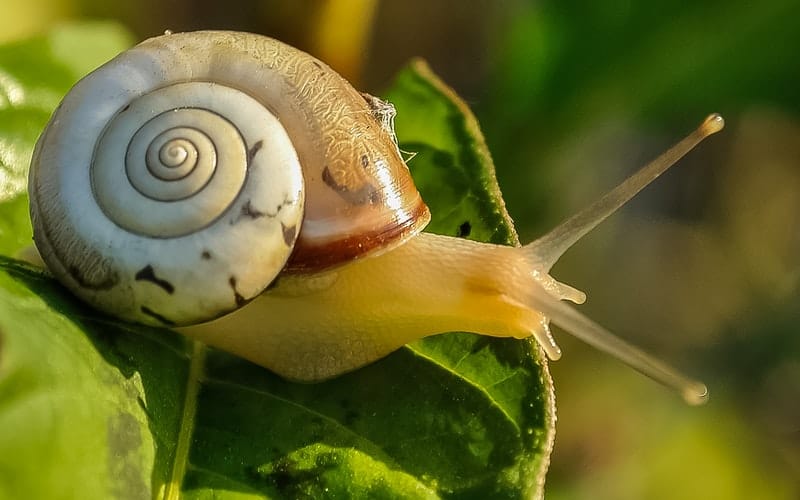Last Updated on February 5, 2023 by ellen
How do snails eat? Learn more about how different snail species eat and other interesting facts about snails.
Posts may be sponsored. This post contains affiliate links, which means I will make a commission at no extra cost to you should you click through and make a purchase. As an Amazon Associate I earn from qualifying purchases.
Table of Contents
How Do Snails Eat?
Snails eat in a variety of ways, depending on the species. Most land snails feed on plants, fungi, and decaying matter like dead leaves and wood.
Aquatic snails are more likely to consume algae or detritus (decaying plant material). Some carnivorous species may also prey on small animals or other invertebrates.
Snails have a unique way of eating, using their radula (tongue) to scrape food off surfaces and then swallow it with their proboscis (long tube). This type of feeding is known as rasping or grazing.
The radula has tiny ridges like microscopic teeth that help to cut up the small food particles and make it easier to swallow.
Snails also have a couple of other interesting adaptations that help them to eat. Their strong muscular foot allows them to cling onto surfaces, and their slimy mucus helps them to move over wet or rough surfaces without getting stuck or injured.
There are many different eating habits depending on the type of snail.
What do freshwater snails eat?
Freshwater snails are mainly herbivores, meaning they feed on plant matter. A freshwater snail may consume algae, detritus (decaying plant material), and small animals like insect larvae. Some aquatic snails may even scavenge for food in the form of dead fish or other organic matter.
What do sea snails eat?
Sea snails are mainly carnivorous, meaning they prey on other small animals. This could include worms, crustaceans, mollusks, and even other snails. Some species may feed on algae or detritus (decaying plant material).
Do snails eat dead snails?
In some cases, yes. Cannibalism is known to occur in some species of land snails, where an adult snail will consume another one if food is scarce.
Where can I find snail food?
Snail food can be purchased from pet stores or online retailers. You may also find suitable foods in your local area, such as fruits and vegetables like cucumber, apple, kale, spinach, and carrots.
There are also specially formulated commercial snail diets available for purchase. These usually contain a mix of plant-based ingredients and minerals to provide snails with a balanced diet.
Get my preferred brand right here.
What do land snails eat?
Land snails mostly feed on plants. However, they may also consume fungi and decaying matter like dead leaves and wood. Some species of land snails are carnivorous, meaning they prey on small animals or other invertebrates.
The common garden snail will enjoy fruits and vegetables found in your garden. You can also feed your pet snail the same thing.
Are there carnivorous snails?
Yes, there are several species of carnivorous snails. These include the rosy wolf snail (Euglandina rosea), Liguus Tree Snail (Liguus fasciatus), Leopard Slug (Limax maximus) and Cornu aspersum. These snails feed on small animals such as insect larvae, worms, and slugs.
Most terrestrial snails are herbivorous snails. Land snails eat decaying waste and plant crops.
Do snails eat algae?
Yes, many aquatic snails feed on algae. Algae are an important source of food for snails as it is rich in vitamins, minerals, and proteins which help them to stay healthy and strong. Snails may also eat other types of plant matter, depending on the species.
Do snails eat animal waste?
Yes, some land or garden snails feed on animal waste, such as fish feces and decaying plants. This is known as detritus (decaying plant material) and can provide an important source of nutrition for some species.
Can snails bite you?
No, snails do not bite people. However, they may use their radula to try and eat your skin if you handle them.
This is more likely when hungry or threatened, as they will lash out with the sharp edges of their feeding structure to ward off danger. So it’s best to be careful when handling snails!
Snails may also secrete a mild toxin if they feel threatened as a form of defense. This toxin is not dangerous to humans and will only cause minor irritation if it comes into contact with the skin.
Do snails have a mouth?
Yes, snails have a mouth located at the front of their head. This structure is called a proboscis, which acts like a long tube that helps them suck up food particles.
They have tiny teeth that can only be seen under a microscope.
How do snails feed themselves?
The proboscis is connected to the snail’s radula (tongue), which helps them to break down and scrape food into their mouths. The proboscis is also connected to the esophagus, which helps transport food to the stomach for digestion.
What do snails drink?
Snails get most of their hydration from the moisture they consume while eating. They will also drink water droplets or small amounts of liquid that they encounter in their environment. Some species may even extract moisture directly from the air, allowing them to survive in dry climates.
Do snails sleep?
Yes, snails do sleep, usually at night or during periods of inactivity. During this time, they will retreat into their shells and become dormant until it’s time to start foraging again. Snails don’t usually sleep for a long period of time; they usually take short naps throughout the day.
Snails are also known to hibernate during cooler months when there is not enough food available or the temperatures drop too low.
This product presentation was made with AAWP plugin.
Where do snails live?
Snails can be found all over the world in both aquatic and terrestrial habitats. Aquatic snails live in the water, while terrestrial snails live on land. They can be found in many different types of habitats, including deserts, forests, grasslands, and gardens.
Many species of snails are quite adaptable and can survive in a wide range of temperatures and environments. Some freshwater snails may even migrate between freshwater and saltwater habitats.
No matter where they live, snails prefer damp areas that provide plenty of food and shelter from predators. This can be on the ground, in trees, rocks, logs, or underground burrows.
Interesting facts about the snail species
Snails have been around for millions of years and come in various shapes and sizes. Here are some more interesting facts about snails:
– Snails have thousands of tiny teeth on their radula (tongue). The radula scrapes food off surfaces.
– Most terrestrial snail species are hermaphrodites, meaning they have male and female reproductive organs.
– Some species of snails hibernate for up to three years!
-Snails love treats like sweet corn, cooked grains, and pumpkin seeds.
-You will need to provide calcium sources like cuttlebone shells to your pet snails. This helps them develop a hard shell.
Related Reading
- Pet snail care for beginners
- How to make a snail terrarium
- Keeping pet snails
- Can a snail survive a broken shell?
- Good snail names
- Saltwater fish that eats algae
- Do snails hibernate?
- Kitty crafts

Ellen runs a small pet sitting business in southern Vermont. She has experience with a variety of small animals, dogs and cats. She has also cared for ducks, chickens and rabbits. Combined, she has over 20 years of experience in pet care and pet sitting.
